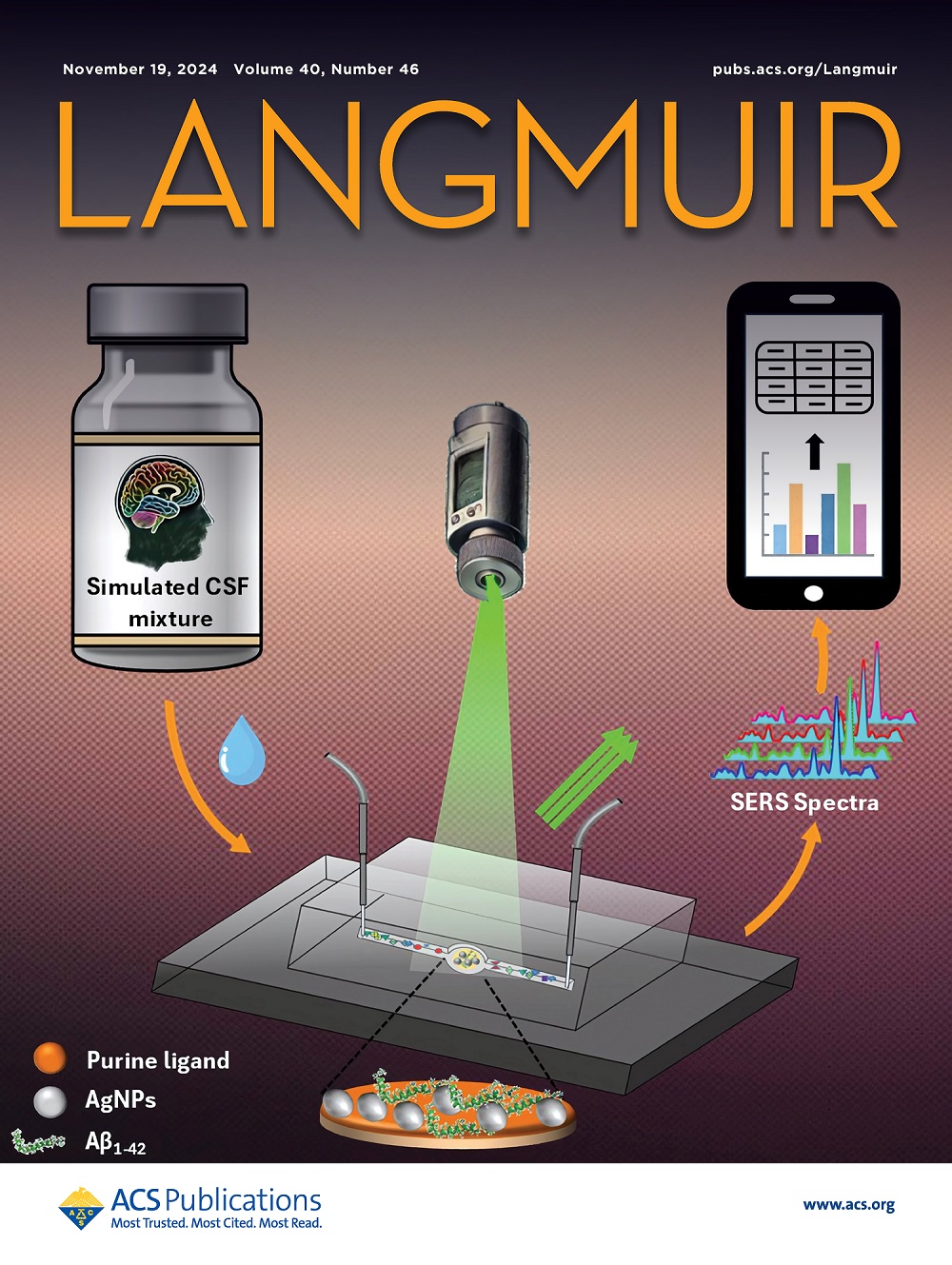用于宏观信号放大的柱状[5]芳烃酶指示界面干扰
IF 3.7
2区 化学
Q2 CHEMISTRY, MULTIDISCIPLINARY
引用次数: 0
摘要
在液-液界面上酶指示信号的产生为宏观尺度上控制和检测生化过程提供了一种新的策略。在这里,我们通过铜介导的“点击”反应,探索柱[5]芳烃(P[5]A)衍生物在油水界面的自组装和干扰,为产生可观测信号提供了一个通用的平台。在液滴界面处形成的柱状[5]芳烃网络降低了界面张力,使液滴根据界面干扰过程采取各种非平衡形状。通过改变pbbbba衍生物和抗坏血酸(AA)的浓度,我们微调液滴的表面覆盖,提供对干扰动力学的控制。此外,我们引入了一种信号放大机制,其中碱性磷酸酶(ALP)对休眠还原剂的去磷酸化触发界面上的“点击”反应。该系统可以通过宏观表面变化量化ALP活性,重金属和金属螯合剂抑制ALP,减少表面覆盖。这种方法代表了一种很有前途的方法,可以将分子信号放大到可检测的宏观输出,在生化传感和材料科学中具有潜在的应用前景。本文章由计算机程序翻译,如有差异,请以英文原文为准。
![Enzyme-Instructed Interfacial Jamming of Pillar[5]arenes for Macroscopic Signal Amplification](https://img.booksci.cn/booksciimg/2025-1/2025012410909090729289.png)
Enzyme-Instructed Interfacial Jamming of Pillar[5]arenes for Macroscopic Signal Amplification
Enzyme-instructed signal generation at liquid–liquid interfaces presents a novel strategy for controlling and detecting biochemical processes on macroscopic scales. Here, we explore the self-assembly and jamming of pillar[5]arene (P[5]A) derivatives at the oil–water interface via a copper-mediated “click” reaction, providing a versatile platform for generating observable signals. The formation of a pillar[5]arenes network at the droplet interface reduces interfacial tension, allowing droplets to adopt various nonequilibrium shapes based on the interfacial jamming process. By varying concentrations of P[5]A derivatives and ascorbic acid (AA), we fine-tune the surface coverage of droplets, offering control over the jamming dynamics. Additionally, we introduce a signal amplification mechanism where the dephosphorylation of a dormant reductant by alkaline phosphatase (ALP) triggers the “click” reaction at the interface. This system enables the quantification of ALP activity through macroscopic surface changes with inhibition of ALP by heavy metals and metal chelators reducing surface coverage. This approach represents a promising method for amplifying molecular signals into detectable macroscopic outputs with potential applications in biochemical sensing and materials science.
求助全文
通过发布文献求助,成功后即可免费获取论文全文。
去求助
来源期刊

Langmuir
化学-材料科学:综合
CiteScore
6.50
自引率
10.30%
发文量
1464
审稿时长
2.1 months
期刊介绍:
Langmuir is an interdisciplinary journal publishing articles in the following subject categories:
Colloids: surfactants and self-assembly, dispersions, emulsions, foams
Interfaces: adsorption, reactions, films, forces
Biological Interfaces: biocolloids, biomolecular and biomimetic materials
Materials: nano- and mesostructured materials, polymers, gels, liquid crystals
Electrochemistry: interfacial charge transfer, charge transport, electrocatalysis, electrokinetic phenomena, bioelectrochemistry
Devices and Applications: sensors, fluidics, patterning, catalysis, photonic crystals
However, when high-impact, original work is submitted that does not fit within the above categories, decisions to accept or decline such papers will be based on one criteria: What Would Irving Do?
Langmuir ranks #2 in citations out of 136 journals in the category of Physical Chemistry with 113,157 total citations. The journal received an Impact Factor of 4.384*.
This journal is also indexed in the categories of Materials Science (ranked #1) and Multidisciplinary Chemistry (ranked #5).
 求助内容:
求助内容: 应助结果提醒方式:
应助结果提醒方式:


